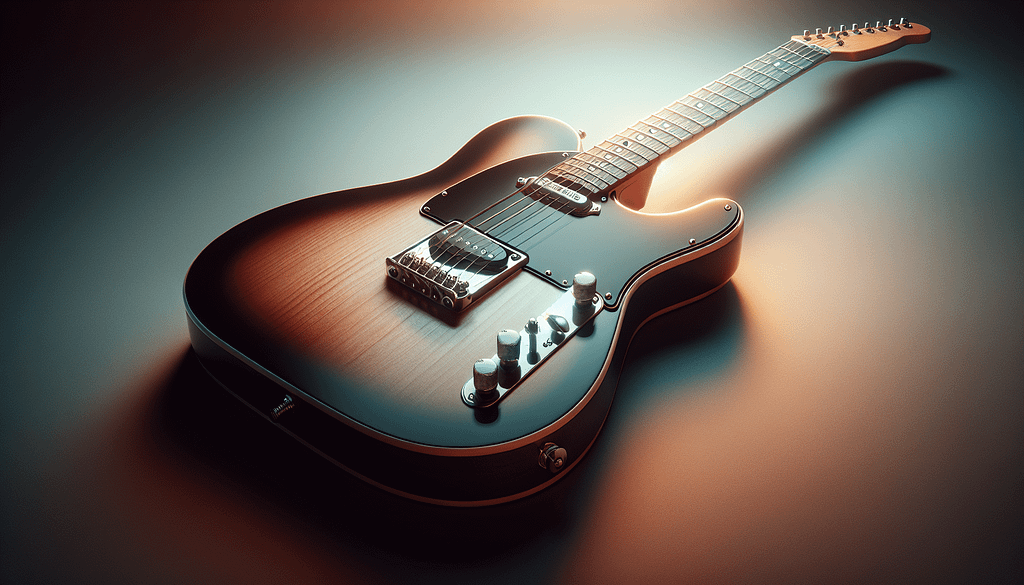This post may contain affiliate links. As an Amazon associate, Google associate as well as associate for other programs, Guitar & Music Institute may earn commissions from qualifying purchases.

The Genesis of Fender Guitars
The Man Behind the Magic – Leo Fender
Clarence Leonidas “Leo” Fender, born on August 10, 1909, was the mastermind behind the Fender brand. Unlike many of his contemporaries, Leo wasn’t a musician but a curious inventor and tinkerer. His initial foray into electronics was repairing radios, a skill he honed from his earlier days. This background in electronics later became a crucial component in his innovative designs for guitar amplifiers and electric guitars.The Early Days – Fender’s Radio Service
Before Fender guitars became a household name, Leo ran a small business called Fender’s Radio Service in Fullerton, California. In his shop, he not only repaired radios but also worked on public address systems and built amplifiers. Musicians frequented his store, often discussing what they wished they could get out of their instruments—conversations that undoubtedly planted seeds for future innovations.The Birth of the First Fender Guitar
Esquire – The Pioneer
In 1950, Fender introduced its first solid-body electric guitar, the Esquire. It was groundbreaking because it deviated from the hollow-body electric guitars that were prevalent at the time. The Esquire initially featured a single pickup, making it a simpler instrument but offering a bright and straightforward sound. Though it underwent several changes and was later overshadowed by its successors, the Esquire laid the groundwork for Fender’s future triumphs.Broadcaster Becomes Telecaster
Shortly after the Esquire, Fender launched the Broadcaster in 1951. Due to a trademark conflict with Gretsch, who had a drum kit named “Broadkaster,” Fender rebranded the guitar as the Telecaster. This solid-body, dual-pickup guitar quickly became a favorite among country musicians for its bright, cutting tone and its easy-to-play neck. The Telecaster’s simplicity and versatility made it a staple in the music industry.The Stratocaster Era
Design and Innovation
Perhaps no other guitar is as synonymous with rock and roll as the Fender Stratocaster. Introduced in 1954, the Stratocaster was a result of extensive feedback from professional musicians. It featured three pickups, a contoured body for comfort, and an innovative tremolo system that allowed players to bend notes and create a wobbling effect. The Stratocaster’s sound and design offered something new to musicians and quickly captivated their imaginations.Legendary Stratocaster Players
The Stratocaster became the go-to instrument for countless legendary musicians. Here are just a few who have made their mark with this iconic guitar:| Musician | Contribution |
|---|---|
| Jimi Hendrix | Revolutionized electric guitar playing with his innovative techniques. |
| Eric Clapton | Made the “Blackie” Stratocaster famous, blending blues and rock. |
| Jeff Beck | Known for his virtuosity and use of the Stratocaster’s tremolo system. |
| Stevie Ray Vaughan | Brought electric blues to a new generation with his Texas flood tone. |
Fender’s Impact on Various Genres
Rock and Roll
It’s hard to overstate Fender’s influence on rock and roll. Icons like Jimi Hendrix, Eric Clapton, and Buddy Holly all contributed to the genre’s soundscape with their Fender guitars. The bright, cutting tones helped define various rock sounds, from the distorted growls of hard rock to the cleaner, melodic lines of classic rock.Country Music
The Telecaster, with its bright, twangy sound, found a natural home in country music. Artists like Buck Owens and Merle Haggard helped solidify the Telecaster’s place in the genre. Its simplicity and reliability made it a favorite among country musicians looking for an instrument that could handle both picking and strumming with equal ease.Blues
Blues musicians, including legends like Stevie Ray Vaughan and Muddy Waters, have long been fans of Fender guitars. The expressive quality of both the Telecaster and Stratocaster, combined with their robustness, made them ideal for the emotional nuances and tonal variations needed in blues music.
Expanding the Fender Line
Jazzmaster and Jaguar – Catering to Jazz
In the late 1950s, Fender sought to appeal to the jazz community with the Jazzmaster, which featured a warmer tone and a unique floating tremolo system. Though it didn’t catch on with jazz musicians as intended, it later found a cult following among surf rock and alternative musicians. The Jaguar, introduced in 1962, continued this trend. It sported shorter scale lengths and additional vibrato controls. Once again, while it wasn’t immediately adopted by jazz players, it became integral to the sound of subsequent music movements, including surf rock and independent rock.Mustang – The Student Model
Introduced in 1964, the Fender Mustang was originally designed as a student model. It featured a shorter scale and more straightforward controls, making it easier for beginners to play. However, the Mustang’s distinctive look and versatile sound eventually garnered a fanbase among seasoned musicians as well.P-Bass and J-Bass – Revolutionizing Bass Guitars
Fender didn’t just stop at guitars; they revolutionized the world of bass guitars as well. The Precision Bass (P-Bass), introduced in 1951, was the first electric bass guitar to gain widespread adoption. Its solid body and fretted neck provided precise intonation and a new range of tone possibilities. The Jazz Bass (J-Bass), introduced in 1960, offered a slimmer neck and two pickups, providing more tonal variety. These basses became industry standards, used by musicians across all genres.| Model | Year Introduced | Key Features |
|---|---|---|
| Jazzmaster | 1958 | Warmer tone, floating tremolo system |
| Jaguar | 1962 | Shorter scale length, additional controls |
| Mustang | 1964 | Student model, shorter scale |
| Precision Bass (P-Bass) | 1951 | Solid body, fretted neck |
| Jazz Bass (J-Bass) | 1960 | Slimmer neck, dual pickups |
Fender in Modern Times
CBS Era – The Corporate Giant
In 1965, Leo Fender sold the company to CBS. While this era saw extensive growth, it also faced criticism for mass production changes that some argued affected quality. Nevertheless, Fender continued to innovate and expand, introducing models like the Starcaster and Coronado.Post-CBS Era – Revival and Rebirth
In 1985, Fender was bought by a group of investors and employees, leading to the re-founding of the Fender Musical Instruments Corporation. This era focused on quality control and reissuing classic models with vintage specifications. Fender also expanded its custom shop, which allowed musicians to order bespoke guitars tailored to their needs.Digital Age – Fender Today
Fender has adapted to the digital age by venturing into guitar modeling and software like the Fender Tone app, which allows users to customize their amp settings digitally. Additionally, Fender Play, an online learning platform, has made learning to play the guitar more accessible than ever.Why Fender Endures – The X Factor
Innovation and Adaptability
One of the key reasons for Fender’s enduring success is its relentless innovation. Whether it’s the introduction of new models like the American Ultra series or enhancements in guitar technology, Fender continues to push the boundaries of what’s possible with stringed instruments.Endorsements and Collaborations
Fender has maintained its relevance through high-profile endorsements and collaborations with contemporary artists. Limited edition models and cross-brand collaborations keep Fender in the cultural conversation, attracting new generations of musicians.Quality and Playability
Despite their innovations, Fender has always adhered to Leo Fender’s original vision of creating instruments that are simple, durable, and playable. It’s this dedication to quality that has built Fender’s loyal customer base over the decades.Conclusion: The Legacy of Fender Guitars
The story of Fender guitars is inseparably linked to the story of modern music. From its humble beginnings in Leo Fender’s radio repair shop to becoming a global icon, Fender guitars have left an indelible mark on multiple genres and countless musicians. Whether you’re a seasoned player or someone who’s just picked up a guitar for the first time, you’re part of a rich legacy that spans decades. So next time you pick up your Stratocaster or Telecaster, take a moment to appreciate the remarkable history that’s embedded in its strings. And hey, isn’t it amazing to think what the next chapter in Fender’s history will bring?You might be intrigued by how the evolution of electric guitars played a pivotal role in shaping modern music. Speaking of iconic instruments, you might find it fascinating to explore the influence of the Fender Stratocaster and its contributions to rock music. If you’re interested in the roots of country music, don’t miss the impact of the Fender Telecaster and its popularity among legendary musicians. Additionally, delving into the history of Fender guitars can provide you with a deeper understanding of how these instruments have shaped various genres over the decades.
This post may contain affiliate links. As an Amazon associate, Google associate as well as associate for other programs, Guitar & Music Institute may earn commissions from qualifying purchases.



















